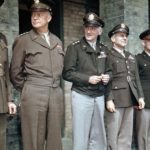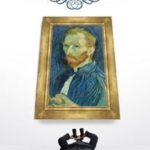Being a nostalgic soul, and one that still owns his old Candle shortwave radio, inherited from an aunt, I like to set time on my watches and library clock to the shortwave radio station WWV, an atomic clock-driven time interval broadcasting station operated by the National Institute of Standards and Technology, formerly the National Bureau of Standards.
There’s really no reason for me to set my watches freehand to their coordinated universal time announcements other than I’ve had this habit for over 37 years, much like my habit of buying an Old Farmer’s Almanac every September when the next year’s issue is released.
The Fort Collins, Colorado-based station was always a fascination for me, being an amateur astronomer and so tied closely to time, but official information was a little difficult to come by for teenage kids in the pre-Internet days. When I finally got online in the late 1990’s, I searched up basic information on the stations.
Then one day in the early 2000’s when I was working for Manion’s International Auction House, a lot turned up with a copy of the NBS Special Publication 432, published by the U.S. Department of Commerce and National Bureau of Standards, called NBS Time & Frequency, Dissemination Services, dated September 1979 – the era I discovered the stations. I still have a copy.
The booklet gives a fantastic rundown of the history of the stations and the technical specifications of their signals.
WWV dates back to 1923 and can be clearly heard throughout the 48 contiguous states. It has two sister stations, WWVB, also located in Fort Collins, and WWVH in Kauai, Hawaii. The stations serve many industries from public to private. Their mission is to broadcast time announcements, standard time intervals, standard frequencies, geophysical alerts, solar-terrestrial indices, marine storm warnings, Omega Navigation System status reports (discontinued in 1997 with the advent of GPS), UT1 time corrections, and BCD time code (binary-coded decimals).
WWV and WWVH can still be heard at 2.5, 5, 10, and 15 MHz, with WWV additionally being heard at 20 MHz. WWVB broadcasts at 60 MHz.
Depending on atmospheric disturbances and other natural phenomena, the signal might not be heard at a given frequency during certain times of day. Generally, frequencies above 10MHz are best for daytime listening, while lower frequencies are stronger at night.
Owing to our proximity to WWV compared to WWVH’s Hawaii transmitter, I usually only heard WWVH late at night, and faintly at that, which nonetheless was thrilling to a kid coming to understand the true size of the world. There is a distinct difference in their tones as well as the fact a female voice announced the time as compared to WWV’s male voice. The male voice I was listening to on WWV in 1979-1980 is still there, marking time even as I write this. I’ve not heard WWVH over the air lately, but I have called the number below, and she’s still there.
WWV and WWVH still have a telephone service by which you can hear the broadcasts, (303) 499-7111 for WWV (Colorado), and (808) 335-4363 for WWVH (Hawaii), though I’ve noticed the telephone signal is approximately half a second behind the shortwave signals.
As a young astronomer, I listened to these stations often during observing sessions, especially when timing was a vital part of the observation, such as during eclipses and occultations. Beyond that, there was something fascinating to a kid about listening to a broadcast from so far away. I became very familiar with Cold War-era shortwave, including the Soviet Union’s famous ‘woodpecker.’ I’ll get to that eventually.
So anyway, I came to know the differences in tones and pulses between the stations, especially one particular aspect of WWVH between 30-36 seconds of every minute when there wasn’t a constant tone behind the pulses. In place of ticking pulses, there was a curious squelched, almost squealing tone. I always found it intriguing, so imagine my shock and awe when I went to see The Empire Strikes Back in 1980 and heard the tone during the Battle of Hoth scene. You can hear it clearly between 2:16-2:20 of this clip:
Websites:
WWV: https://www.nist.gov/pml/time-and-frequency-division/radio-stations/wwv
WWVH: http://tf.nist.gov/stations/wwvh.htm
WWVB: https://www.nist.gov/pml/time-and-frequency-division/radio-stations/wwvb




